- Home
- Fish Identification
Saltwater Fish Identification
for Sea Anglers
Any newcomer to saltwater fishing is likely to struggle with saltwater fish identification for a while. It can all be a bit of a mystery at first, particularly with those fishes that look similar but are in fact different species. Is it a flounder or a plaice for example?
And our novice saltwater angler will also want to know if it's a dangerous fish in any way. Is it a poisonous fish to touch, and am I risking ciguatera poisoning if I eat it?
So yes, correct saltwater fish identification is pretty important for these reasons alone, so these are the sort of issues that we'll be taking a look at here.
There are thousands of different species of saltwater fish, the vast majority of which are either too small or live too deep to be of interest to sport fishermen.
Let's get back to the fish that fall within the scope of this website, starting with...
Cartilaginous Fish
This group of saltwater fish include sharks, skates and rays and are differ from true fishes in that:~
- Their skeleton is built of cartilage, not bones.
- Their skin is not made up of scales, but is rough - much like sandpaper - to the touch.
Sharks
|
Excluding the plankton-eating Basking Shark, there are five types of sharks likely to be targeted by sport fishermen around the shores of the UK and Western Europe. As shown here, they're the Mako Shark, Porbeagle Shark, Blue Shark, Hammerhead Shark and Thresher Shark. |
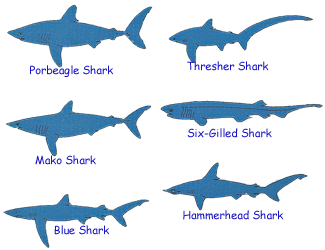 |
Artwork courtesy of Osprey Publishing Ltd
Skates and Rays
So what's the difference between skates and rays?
|
One defining difference is that rays give birth to live young and skate give birth to their young in egg-cases - the 'mermaids purses' or 'devil's purses' - that are often found washed up on our shores. |
 |
Certain types of shark, the lesser-spotted dogfish for one, also use this approach to protect their young from hungry predators.
|
Another is that the ray's tail is relatively slender, even whip-like in some cases like the stingray shown here, and usually comes equipped with a saw-edged stinging spine midway along its length. A skate's tail is more stocky than that of a ray and doesn't have a stinging spine. |
Artwork courtesy of Gyldendal Norsk Forlag
|
Incidentally, for several years now I've relied on this excellent paperback for saltwater fish identification. There're more than 1,000 different species described, including including information on range and habitat such as depths, bottom types, water temperatures, and salinity. Very valuable information for those of us who seek to catch them! |
Bony Fish
The other main group of saltwater fishes are classed as bony fishes, which are built around a traditional skeleton which supports the other parts of a fish.
|
For example, all round fish (that aren't sharks, rays or skates) and flatfish are classed as bony fish, as are other bottom feeding demersal fish like cod, haddock whiting and ling, along with the highly-prized saltwater gamefish and the baitfish we use to catch them with. |
Round Fish
Other round fish not mentioned in the previous paragraph include the sea bass, mackerel, bream, mullet, wrasse, coalfish and pollock. Pollock and coalfish are pictured here. They're clearly very similar, each sporting three dorsal fins and two anal fins.
Many anglers find it difficult to tell the difference between pollack and coalfish, but the clue to their correct identification is in the lateral line.
The Pollock
|
The pollock's lateral line is dark and has a pronounced curve over the pectoral fin. |
The Coalfish
|
The coalfish's lateral line is much lighter, almost white, and runs in a straighter line from head to tail. |
Flatfish
When flatfish larvae first emerge from their eggs and take a first glimpse of a hostile marine world, they're symmetrical and swim upright with their eyes conventionally located on each side of their head.
It is only during the course of their development that they show a marked preference for skulking around on the seabed.
The Plaice
|
To make this horizontal lifestyle a success, the eye which would otherwise find itself staring constantly at the seabed moves around to the upperside where it can be of more use, and the swimbladder is absorbed to enable the flatfish to stay put on the seabed. |
The Flounder
|
In both the flounder and the plaice shown here (two of the UK's most common flatfish, but often another instance where saltwater fish identification can be confusing for some anglers) and along with the halibut, dab and sole, the eyes are on the right hand side. |
The Turbot
|
But on other flatfish species such as the turbot, brill, megrim and topknot the eyes are on the left hand side. The underside of flatfishes is usually a pale white/grey - almost opaque - and the topside darkly pigmented. |
Artwork courtesy of Gyldendal Norsk Forlag
Recent Articles
-
Sea Fishing Rods and Reels Must Be Compatible for a Balanced Outfit
Mar 08, 21 08:30 AM
A quality reel fitted to a quality rod doesn't necessarily make it a quality outfit. Your fishing rods and reels have to be properly matched if you're to get the best out of them, and here’s how -
Essential Lure Fishing Tips That All Saltwater Anglers Should Know
Mar 08, 21 04:51 AM
Which single lure fishing tip applies to trolling, jigging, baitcasting, spinning, fly fishing and any other branch of lure fishing? Well, it is the one at the top of this list -
Vital Jig Fishing Tips That You Really Cannot Afford To Miss!
Mar 07, 21 10:20 AM
Essential jig fishing tips to help you select the right lure for successful jig fishing, together with the techniques required to get the most out of your jig fishing outfit
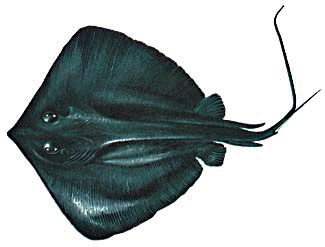
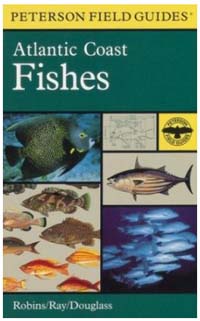
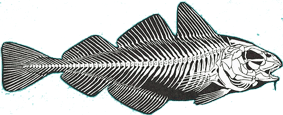


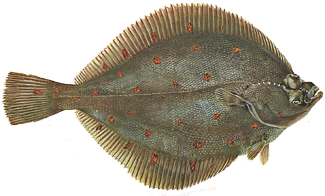
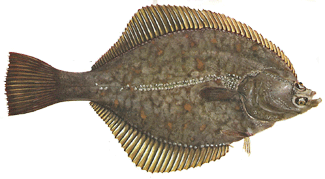
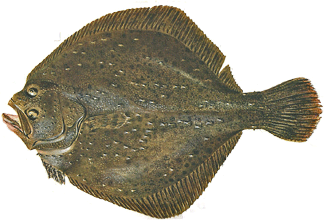


















New! Comments
Have your say about what you've just read! Leave me a comment in the box below.